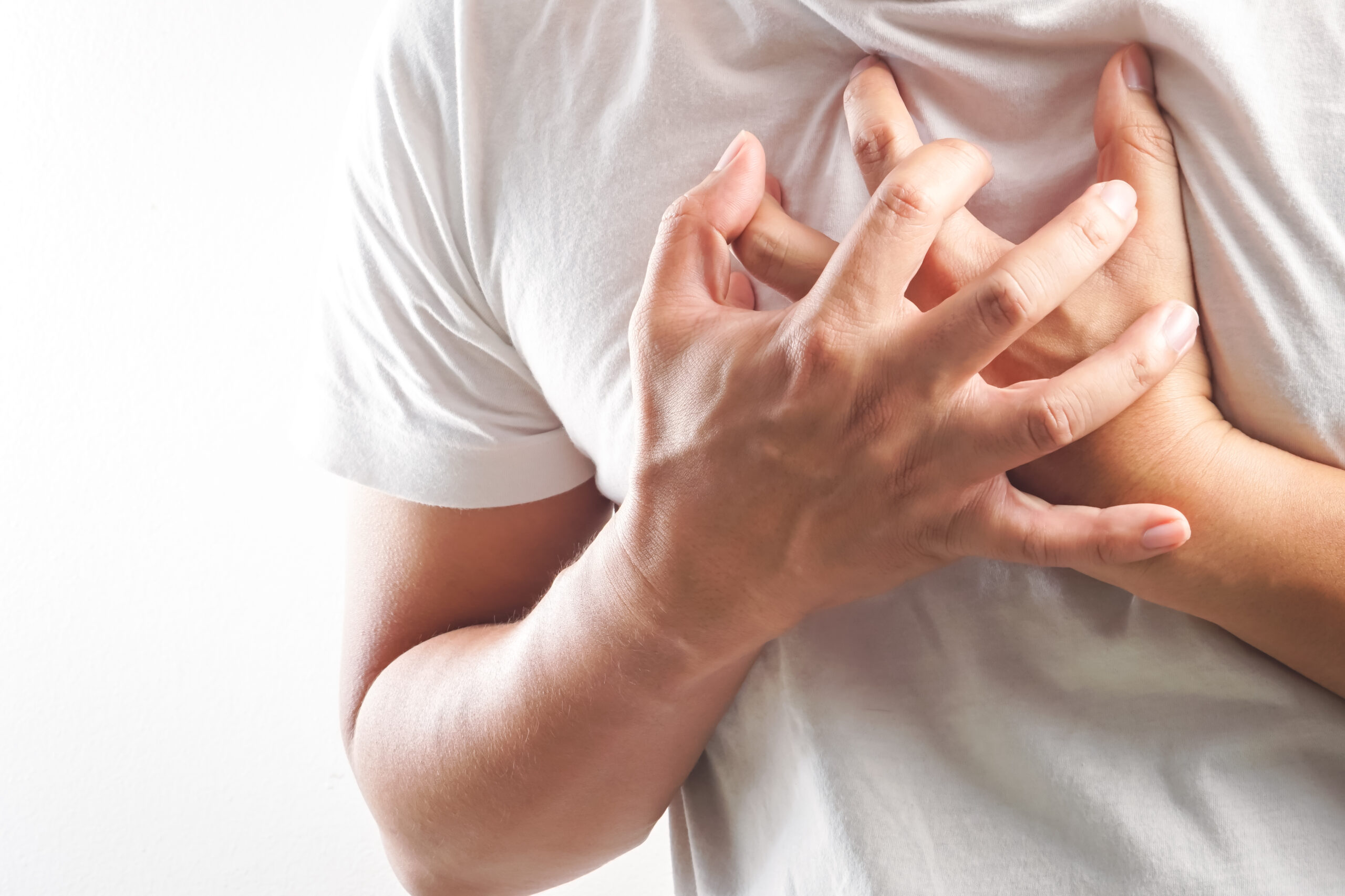What are the symptoms of a pericardial cyst?
Pericardial cysts are usually asymptomatic, meaning they often don’t cause noticeable symptoms. However, when symptoms do occur, they can vary depending on the size and location of the cyst. Here are some potential symptoms of a pericardial cyst:
Symptoms
- Chest Pain: Discomfort or pain in the chest, which may be sharp or dull.
- Shortness of Breath: Difficulty breathing or feeling breathless, especially if the cyst is large and compresses the lungs or heart.
- Palpitations: Sensation of irregular heartbeat or rapid heartbeat, though this is less common.
- Cough: A persistent cough, which might be due to pressure from the cyst on the surrounding structures.
- Discomfort or Pressure: A feeling of pressure or fullness in the chest area.
- Swelling: Rarely, large cysts might cause swelling in the legs or abdomen due to pressure effects.
Note
In many cases, pericardial cysts are discovered incidentally during imaging studies conducted for other reasons, as they often do not present symptoms. If a cyst is symptomatic, the treatment approach will depend on the severity of symptoms and the cyst’s impact on surrounding structures.
What are the causes of a pericardial cyst?
Pericardial cysts are fluid-filled sacs that develop within the pericardium, the membrane surrounding the heart. The exact cause of many pericardial cysts is often unknown, but several factors and conditions are associated with their formation:
1. Congenital Factors
- Developmental Anomalies: Most pericardial cysts are believed to be congenital, resulting from developmental anomalies during fetal life. These cysts are thought to arise from remnants of the embryonic pericardial space.
2. Traumatic Factors
- Injury or Trauma: Although less common, pericardial cysts can sometimes form as a result of trauma or injury to the chest.
3. Inflammatory Conditions
- Inflammation: Inflammatory conditions affecting the pericardium, such as pericarditis, may occasionally be associated with the formation of cystic structures.
4. Post-Surgical or Post-Radiation Changes
- Surgical Procedures: Post-operative changes following heart surgery or procedures can sometimes lead to the development of pericardial cysts.
- Radiation Therapy: Radiation to the chest area, especially for cancer treatment, may contribute to the formation of pericardial cysts.
5. Tumors
- Benign Tumors: Occasionally, pericardial cysts might be associated with benign tumors or other masses in the pericardial space.
6. Genetic Factors
- Genetic Predisposition: Although less well-defined, some genetic factors or syndromes could potentially be linked to the development of pericardial cysts.
Summary
Most pericardial cysts are congenital and arise from developmental anomalies during fetal development. Other potential causes include trauma, inflammation, post-surgical or post-radiation changes, and occasionally benign tumors or genetic factors. Often, the exact cause remains unclear, and many pericardial cysts are found incidentally without associated symptoms.
What is the treatment for a pericardial cyst?
The treatment for a pericardial cyst generally depends on the size of the cyst and whether it is causing symptoms. Here’s an overview of treatment options:
1. Observation
- Asymptomatic Cysts: Many pericardial cysts are asymptomatic and found incidentally on imaging studies. In such cases, no immediate treatment may be necessary. Regular follow-up with imaging may be recommended to monitor the cyst’s size and any potential changes.
2. Symptomatic Treatment
- Medications: If the cyst causes symptoms such as chest pain or discomfort, medications such as analgesics (pain relievers) or anti-inflammatory drugs might be used to manage symptoms.
3. Surgical Intervention
- Indications for Surgery: Surgery may be considered if the cyst is large, causes significant symptoms, or is suspected of being malignant or associated with other complications.
- Surgical Options:
- Surgical Removal: The cyst may be surgically removed if it is causing significant discomfort or complications. This is typically done via thoracotomy or thoracoscopy (minimally invasive surgery).
- Drainage: In some cases, pericardiocentesis (needle aspiration) may be performed to drain the fluid from the cyst, though this is less common for pericardial cysts compared to effusions.
4. Treatment of Underlying Conditions
- If Associated with Other Conditions: If the pericardial cyst is secondary to another condition (e.g., post-surgical changes or radiation therapy), addressing the underlying condition may also be part of the management strategy.
Summary
For most pericardial cysts, especially if asymptomatic, regular monitoring and observation are sufficient. Symptomatic cases may be managed with medications, while large or problematic cysts may require surgical removal or drainage. Treatment should be tailored to the individual patient’s needs and the specific characteristics of the cyst.

Leave a Reply
You must be logged in to post a comment.